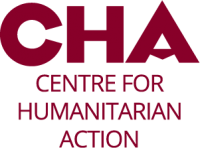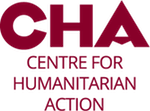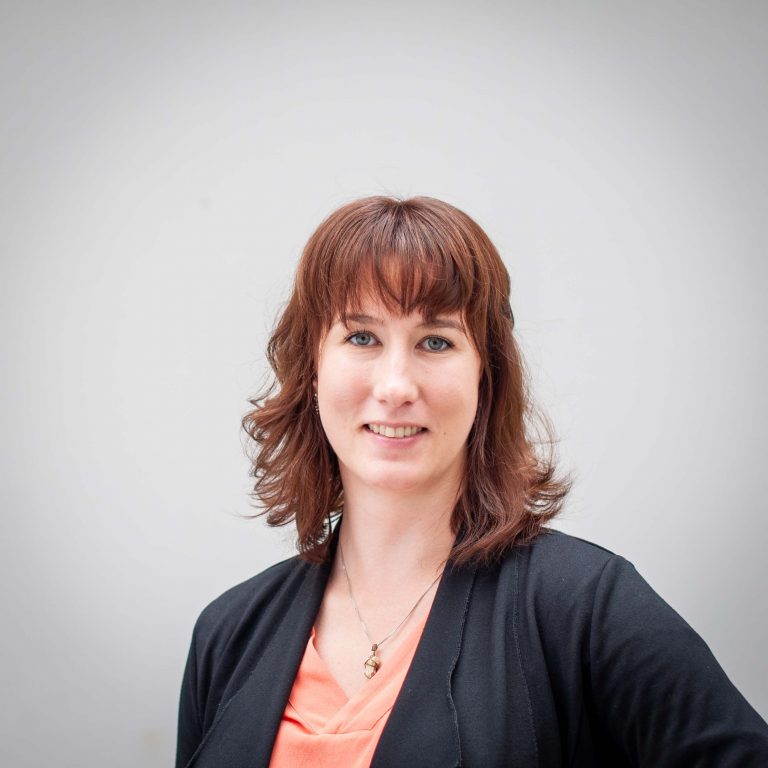Darina Pellowska joined the Centre for Humanitarian Action (CHA) as a Research Fellow in July 2020. In this interview of the series “Faces around CHA”, she introduces herself and explains why the localisation debate remains high on the agenda in humanitarian assistance and how a more participatory debate culture could look like.
Darina, you joined CHA as a Research Fellow in July 2020. Tell us a little bit about yourself: Why did you join CHA, and what did you do before?
Before I joined CHA, I worked in various positions in and with a variety of aid organisations, such as CARE Germany, Malteser International, Welthungerhilfe and the Red Cross. This provided me with a wealth of experiences which I find very useful for my work today. I gained a comprehensive overview of the structures and ways of working – from project and programme management, controlling and finance, to evaluation and accountability. In the process, I have repeatedly come across exciting topics and questions that I wanted to explore in greater depth. That is why in 2016/2017 I decided to go back to university and join a doctoral research programme at the Institute for Development Research and Development Policy and the Institute (IEE) and the Institute for International Law of Peace and Armed Conflict (IFHV). Thanks to the support of the Heinrich Böll Foundation, I have since than been able to work intensively on the topic of risk distribution and transformation in humanitarian project networks. Now, in the final phase of my doctoral studies, I am very happy to have the opportunity to pursue further exciting practice-oriented studies and to contribute to a participatory exchange on humanitarian topics as a Research Fellow at CHA. In this role, I am especially interested to contribute to the debates on localisation and participation, humanitarian access and diplomacy, and data and information management in humanitarian contexts.
Among other things you are working in the CHA project on the “Shrinking Humanitarian Space”. Localisation, a topic that has been much discussed since the World Humanitarian Summit 2016, also plays a major role here. In your opinion, what has received too little attention in the (inter)national discourse so far?
In times of ever new restrictions on the humanitarian action space for international NGOs, increased and more equal cooperation with so called “local” and “national” organisations from the Global South is often cited as the perfect solution. But even these organisations struggle with not always well-intended governmental and donor rules and guidelines – sometimes even more than their international counterparts. This leads me to the question, in which situations and contexts, which humanitarian actors can provide the best possible assistance. In my view, geographical labels, such as “local” or “international”, are not very helpful in this regard. These categories are often all too theoretical. In practice, an international NGO, which has been active in a certain community for decades, is often not perceived as genuinely “international” by community members and vice versa.
As a social network researcher, I therefore see humanitarian organisations rather detached from their geographical position. I rather prefer to stress their position in social networks – and this is what I think has received too little attention in the international discourse yet. A network theoretic approach to localisation can contribute highly interesting insights. For example, in some contexts, it can be an advantage for a humanitarian organisation to have already been active in a region for a longer time and thus to have the respective pre-established contacts and relationships – i.e. social networks. Such pre-established contacts can be crucial to quickly recognise and utilise even the smallest space for humanitarian action in complex environments. However, in other situations, such a dense “connectedness” with relevant local actors can be a disadvantage, e.g. when the population (which still is – or that least should be – the most relevant actor group in the humanitarian system) prefers independent, i.e. “unconnected” humanitarian assistants because they are perceived as more competent and/or trustworthy. However, apart from the composition of the actors involved in humanitarian assistance and the distribution of these actors’ interests, the relationship structures in the respective humanitarian spaces are very interesting for me, too. These are just a few of the many exciting fields of research that I would like to explore in my new position at CHA in close cooperation with aid organisations and other actors.
In addition to your work at CHA, you are currently writing your dissertation on the topic “Risks in Humanitarian Project Networks” at the Institute for Development Research and Development Policy (IEE) and the Institute for International Law of Peace and Armed Conflict (IFHV) at the Ruhr-University Bochum (RUB). Doing this, you have spent a couple of months in South Sudan. What exactly are you studying in your dissertation and can you give us an outlook on your research results?
As I already indicated earlier, I am a social network researcher. My dissertation project deals explicitly with humanitarian project networks, i.e. inter-personal relationships that emerge in the implementation of humanitarian projects. I investigate the influence of these relationships on the distribution and transformation of risks. To this end, I have been observing three school meal projects in South Sudan for two to three months each. In order to successfully implement these projects, a number of different actors had to be brought together in what I call “humanitarian project network”. This included local organisations that designed, coordinated and implemented the projects in cooperation with international NGOs and donors; (food) suppliers; school and parent representatives; political representatives of the respective communities; local, regional and national authorities; as well as the pupils for whom the school meal was provided. Depending on the nature and structure of the relationships between these actors, this complex network had different effects on project-related risks. For example, in one case, a very close relationship between NGO staff, local authorities and the teaching community helped to significantly reduce the risk of misappropriation of aid supplies, i.e. the school meal supplies. In another case, the very same strong relationship increased the risk for aid manipulation and misappropriation. I found that the decisive difference between the two cases is the individual relationships of the individual aid worker. In one case the aid worker supported the humanitarian organisations interests of providing school meals to children. In the other case he supported the community interests of using the school meal foods for other community members whose needs were considered to be more relevant by community leaders. In my interpretation, in the latter case the relationship between the aid worker and the community was stronger than the one to the humanitarian actors and hence the community narrative trumped the school meal project narrative.
Another phenomenon I observed is the transfer of risks along power structures within a network: International aid organisations often transfer the responsibility for the smooth implementation of projects in accordance with the humanitarian principles and donor rules and regulations to local partners who (at least partly) dependent on them. These partners in turn pass this responsibility on to local authorities, such as administration offices and political representatives. In the school meal projects I studied, I observed that these finally held the schools’ principals and teachers accountable when there were any challenges and materialized compliance risk: During my time in South Sudan, quite a few school teachers and headmasters lost their jobs because they either did not want to manipulate school meal projects (as ordered by local elites) and hence were fired by the respective education authorities, or because they did so and hence had to bear the consequences if they were caught by NGO workers.
This interaction between the structure of social relationships and the distribution, transfer, and transformation of risks is at the core of my dissertation. In my thesis, I describe the different dynamics and come to the conclusion that, in addition to the relationship structure of the humanitarian project network itself, also broader social power relations as well as the broader social connectedness of certain key actors beyond the humanitarian project network are decisive for the distribution, transfer and transformation of risks in the implementation of aid projects.
Before joining CHA, you worked as a freelance consultant for various humanitarian NGOs, focusing on the topics of Accountability for Affected Populations (please explain briefly) and Participation. How would you like to incorporate these experiences into your work at CHA?
In my work as an independent consultant, I have repeatedly noticed how important it is for aid organizations, both in the Global South and the Global North, to be accountable to their donors (the so-called “upward accountability”). They spend a considerable amount of time and energy on writing proposals and reports and to collect the necessary data and evidence. At the same time, I have unfortunately noticed that not the same care and energy is spent on the involvement of aid recipients (i.e. for the so-called “downward accountability”) – although affected populations and their needs are and should be the centre of humanitarian work. I always found this very paradoxical. As an independent consultant, I have therefore supported organizations in developing mechanisms that give the so-called “beneficiaries” a strong voice in the development and implementation of aid projects.
In humanitarian policy debates we experience a similar imbalance: Discussions about new ideas, concepts and policies are conducted in a very isolated way and are especially centred in the donor countries of the Global North. Practical inputs from operational staff and project participants from the project regions only find their way into the debates very indirectly and with great difficulties. I observed this also during my time in South Sudan: Exciting and innovative ideas from South Sudanese colleagues and from operational work were often only taken into account when international colleagues from the policy levels brought them to the appropriate fora. Even if that happened, no-one gave credit to the original innovators. This must change! In our networked world, there are already many ways and means to enable more direct participation and more equal discussions. We just need to use them! That is why I also want to use my position here at CHA to strengthen direct participation mechanisms for the civil society and those involved in the operational project work in the humanitarian project regions on the ground.
The interview was conducted by CHA Communications Officer Lena Wallach in August 2020.


